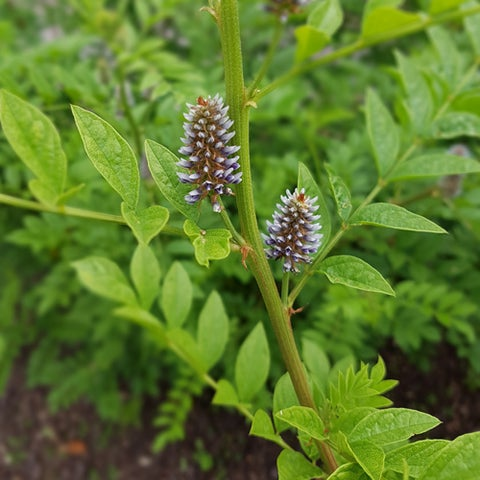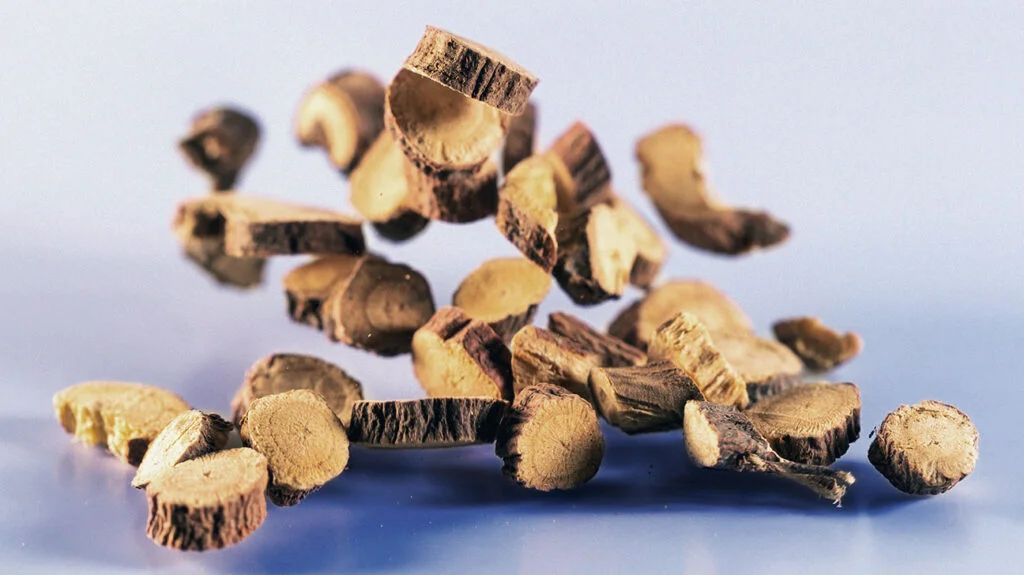If you’ve ever shopped for a licorice-lover, you’ve likely encountered a wide variety of licorice treats, from black licorice wheels to Pontefract cakes, and even salted varieties popular in Nordic countries. While licorice is a favorite for some, it’s not universally loved. However, what many don’t know is that licorice extract is derived from the root of a plant, Glycyrrhiza glabra, and this plant can be grown in many home gardens.
The taste of true licorice root is far different from the candy we’re familiar with, which is often flavored with anise or other additives. Interestingly, despite its unique and natural flavor, licorice root is not as commonly grown as you might expect.
Growing Licorice: Patience Pays Off
Licorice plants take time to mature, which is one reason why they’re not more widely cultivated. Commercially, licorice plants are harvested after four or five years, though home gardeners can expect to begin harvesting after around three years—similar to how long it takes to harvest asparagus.
Growing licorice from seed is not particularly difficult, but germination can be inconsistent. To improve your chances, sow extra seeds in spring or early autumn, placing them on the surface of potting compost without covering them. Keep the seeds at a warm temperature of about 20°C (68°F), and within two to three weeks, you should see your licorice seedlings begin to sprout.

Alternatively, you can start with one- or two-year-old plants, which may be available from garden centers. These plants send up new shoots from their underground rhizomes, which can be used to propagate additional plants.
Planting and Caring for Licorice
Once your licorice plants are established, they are quite hardy. In most regions, you can plant them outdoors after the last spring frost. In colder climates, consider growing licorice in a deep pot that can be moved indoors or into a greenhouse during the winter months, as licorice has long roots that need space to grow.
Licorice plants can grow up to two meters (six feet) tall with a spread of about one meter (three feet), so make sure you leave enough room in your garden for both their growth and the root harvest. Their violet or pale blue flowers and fern-like foliage make them an attractive addition to the back of the garden border, where they can serve as a backdrop for smaller plants like marigolds.
Licorice plants thrive in sunny, well-watered conditions and prefer sandy soil. If your soil is heavy, improve it by digging a deep pit, removing stones, and mixing in plenty of compost. As a legume, licorice helps fix nitrogen in the soil, so it rarely needs additional fertilizing. Mulching around the plants will help conserve moisture, suppress weeds, and add nutrients to the soil.
While licorice plants are relatively low-maintenance, they can be susceptible to pests like slugs, caterpillars, and spider mites, and may develop powdery mildew. Protect them from rabbits and other animals, and keep an eye out for these issues.
Harvesting and Using Licorice
After several years of growth, your licorice plants will be ready for harvest. The roots, which are long, flexible, and yellow on the inside, can be dug up and used for culinary purposes. When harvesting, remove the thick horizontal roots, but leave the deeper tap root and thinner roots to continue growing. If you live in a cold climate, either replant the roots or bring the plant indoors for the winter.
Fresh licorice root tastes sweet and slightly salty. As you chew, the sweetness intensifies as you release the sap. Licorice root can be used to flavor various dishes, drinks, teas, and even baked goods. To preserve the root for later use, it can be dried, or you can keep a root in a jar of sugar to flavor cakes.

Don’t forget to harvest the roots each year. Left unharvested, licorice roots can grow to impressive lengths—up to 13 feet (four meters), and sometimes even longer—making them difficult to manage in your garden.
By growing your own licorice, you not only get a healthier, more authentic version of this classic treat, but you also gain a fascinating and rewarding plant for your garden. With the right care and a little patience, licorice can be a unique and enjoyable addition to your gardening repertoire.
